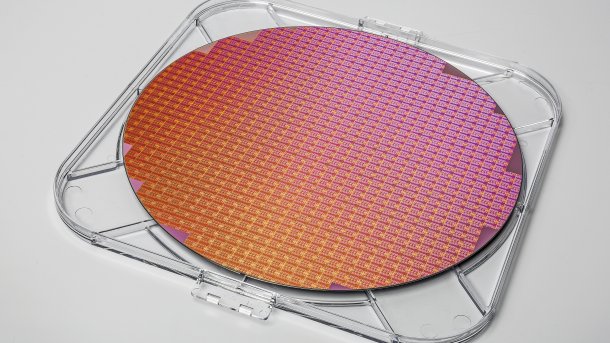Intel hangs in the deep red
Without tax relief, the operating loss is hitting hard: Intel is losing billions and there is hardly any improvement in sight.

(Image: c't)
You know Intel's business is disastrous when the first thing CEO Pat Gelsinger says is: "Our Q2 results were disappointing." For the second quarter of 2024, Intel posted a net loss of 1.61 billion US dollars on sales of 12.83 billion US dollars.
Intel already had financial problems a year ago. At that time, sales were only one percent higher, but a multi-billion dollar tax break resulted in a net profit. Since then, the operating loss has almost doubled to almost two billion dollars. Among other things, Intel is relocating parts of its Core Ultra production from Oregon to Ireland, which will cost money in the short term.
Client processors are doing best
Intel blames most of the loss on its own chip manufacturing division, Intel Foundry, which made a loss of around 2.83 billion dollars on a turnover of 4.32 billion dollars. Since an internal restructuring, Intel says it has been applying industry-standard prices that the processor divisions pay per chip to Foundry.
The impact on the accounts can be seen in the operating results for the second quarter of 2023. Before the restructuring, Intel reported an operating profit of one billion dollars for the Client Computing Group (all desktop and notebook processors). According to the current annual report, the figure after the restructuring is two billion in the same period. In the second quarter of 2024, the Client Group increased its revenue to 7.41 billion dollars and an operating profit of 2.5 billion dollars.
The server division (Data Center and AI Group, DCAI), on the other hand, is weakening – Intel is still not benefiting from the AI boom. Sales have fallen by 3.5 percent to 3.05 billion dollars within a year. Even after the Foundry restructuring, the group is only just keeping its head above water with an operating profit of 300 million.
The situation is similar in the Network and Edge Group (NEX). The spun-off FPGA division Altera remains slightly in the red. Things are looking up at the automotive subsidiary Mobileye, which once again achieved a small operating profit of 72 million dollars.
Another billion-dollar loss in the new quarter
In the current third quarter of 2024, Intel expects sales of between 12.5 billion and 13.5 billion dollars – in the worst-case scenario, this would correspond to a year-on-year decline of 12 percent. The bottom line is a net loss of around one billion dollars.
Due to the poor figures, Intel's management wants to streamline the company. More than 15 percent of the workforce is to go, meaning at least 15,000 jobs will be cut. Intel is also cutting back on research expenditure and the budget for acquisitions in the longer term. For the year 2025, Intel is projecting expenditure of 17.5 billion instead of more than 20 billion as previously.
All hopes are pinned on the 18A chip production generation. Production is expected to start by the end of 2025 and attract many external corporate customers.
Empfohlener redaktioneller Inhalt
Mit Ihrer Zustimmmung wird hier ein externer Preisvergleich (heise Preisvergleich) geladen.
Ich bin damit einverstanden, dass mir externe Inhalte angezeigt werden. Damit können personenbezogene Daten an Drittplattformen (heise Preisvergleich) übermittelt werden. Mehr dazu in unserer Datenschutzerklärung.
(mma)